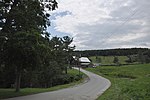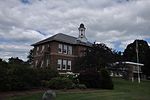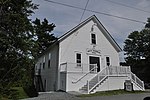Haverhill, New Hampshire
County seats in New HampshireHaverhill, New HampshireNew Hampshire populated places on the Connecticut RiverPopulated places established in 1763Towns in Grafton County, New Hampshire ... and 2 more
Towns in New HampshireUse mdy dates from July 2023

Haverhill is a town and the seat of Grafton County, New Hampshire, United States. The population was 4,585 at the 2020 census. Haverhill includes the villages of Woodsville, Pike, and North Haverhill, the historic town center at Haverhill Corner, and the district of Mountain Lakes. Located here are Bedell Bridge State Park, Black Mountain State Forest, Kinder Memorial Forest, and Oliverian Valley Wildlife Preserve. It is home to the annual North Haverhill Fair, and to a branch of the New Hampshire Community Technical Colleges.
Excerpt from the Wikipedia article Haverhill, New Hampshire (License: CC BY-SA 3.0, Authors, Images).Haverhill, New Hampshire
Route 10,
Geographical coordinates (GPS) Address Nearby Places Show on map
Geographical coordinates (GPS)
| Latitude | Longitude |
|---|---|
| N 44.034166666667 ° | E -72.063888888889 ° |
Address
Route 10
Route 10
New Hampshire, United States
Open on Google Maps










